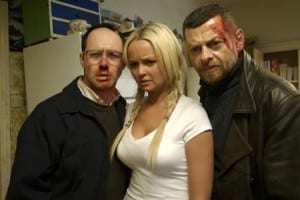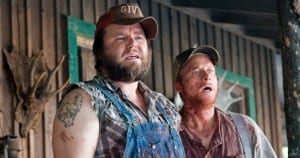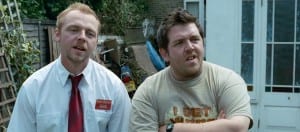This past week I’ve not had much time to think about my feature outline due to other pieces of work, however I have been able to begin forming the skeletal structure of the feature whilst trying to adhere to a clear three-act structure and arcs for the character’s I’ve created. I looked into the evaluation of the three act structure paradigm in Raindance writers’ lab: Write and Sell the hot screenplay (Grove, 2001, 24 – 38) in which Elliot Grove describes how useful the structure is to new screenwriters. As the film’s plot is linear and relatively simple, splitting the film into three acts was easy, and it allowed me to experiment with determining the importance of various character subplots and tertiary characters that the idea naturally began to develop for me.
For example, as Michael and Jacob lock themselves within their house for the majority of the film’s second act, their odd behaviour (getting rid of everything in their house that could be substituted as a weapon against them, screaming and crying loudly etc.) attracts the attention of their neighbours, Mr & Mrs. Preil – an elderly couple who seem to be incredibly nosy and suspicious of the two. The two were inspired by the characters within The Burbs (Dante, 1989) and a small segment of Monty Python’s: The Meaning of Life (Jones, 1983), in which an elderly couple (played by Eric Idle and Graham Chapman) watch over the their Catholic neighbours and their many children whilst judging them from their home. The Preils’ characters also fed into the plot’s third act, where the police are called in on the situation thanks to their suspicion of the two’s actions within their home.
As the first act of the film needs to ‘communicate the theme to the audience’ (Grove, 2001, 25) I began to think about how I wanted the main duo of Michael and Jacob to develop over the film. As it’s part of the comedy genre I partially believe that characters sometimes don’t necessarily need to develop too much throughout, but I feel like Jacob’s overcoming of his ex-girlfriend and determination to build his life back up again after living on Michael’s sofa and leaching of him would be sufficient enough. The whole experience with the mafia could also affect Michael, by forcing him to take action (he is previously shown to be nothing but passive in most aspects of life) it could revitalise him to achieve his dreams or quit his dead-end job? I may need to continue thinking about this one.
At the moment, my three act structure looks like this:
ACT ONE |
– Jacob and Michael are introduced, they live together. Jacob is a recently-single, depressed slob whilst Michael is a passive, uptight man.
– Whilst in a woods (Why are they in a wood? This needs explaining) they stumble upon a ruthless murder by two mafia members (the Mulbys).
– Jacob and Michael run home screaming, whilst the Mulbys are shown to be just as scared.
ACT TWO |
– Jacob and Michael become paranoid and board up their home for days on end, not leaving or communicating with the outside world.
– They get rid of everything within their home which could be used a weapon against them.
– The Mulbys hide the truth from the rest of the family and search for the witnesses to their murder.
– Jacob and Michael’s odd behaviour catches the attention of The Preils.
ACT THREE |
– Jacob and Michael need characterisation here….(needs more thought)
– The Preils call the police on the two, who show up at the same time as the Mulbys.
– A larger gunfight ensues, Michael kills someone with an apple corer…
That’s all I have at the moment, but it’s a starting point for me to jump off of.
Bibliography:
Grove, E. (2001) Raindance Writers’ lab: Write and Sell the hot screenplay. London: Focal Press, 24 – 38.
Dante, J. (1989) The ‘Burbs. [DVD]. Universal Studios.
Jones, T. (1983) Monty Python’s The Meaning of Life. [DVD]. Universal Pictures.





